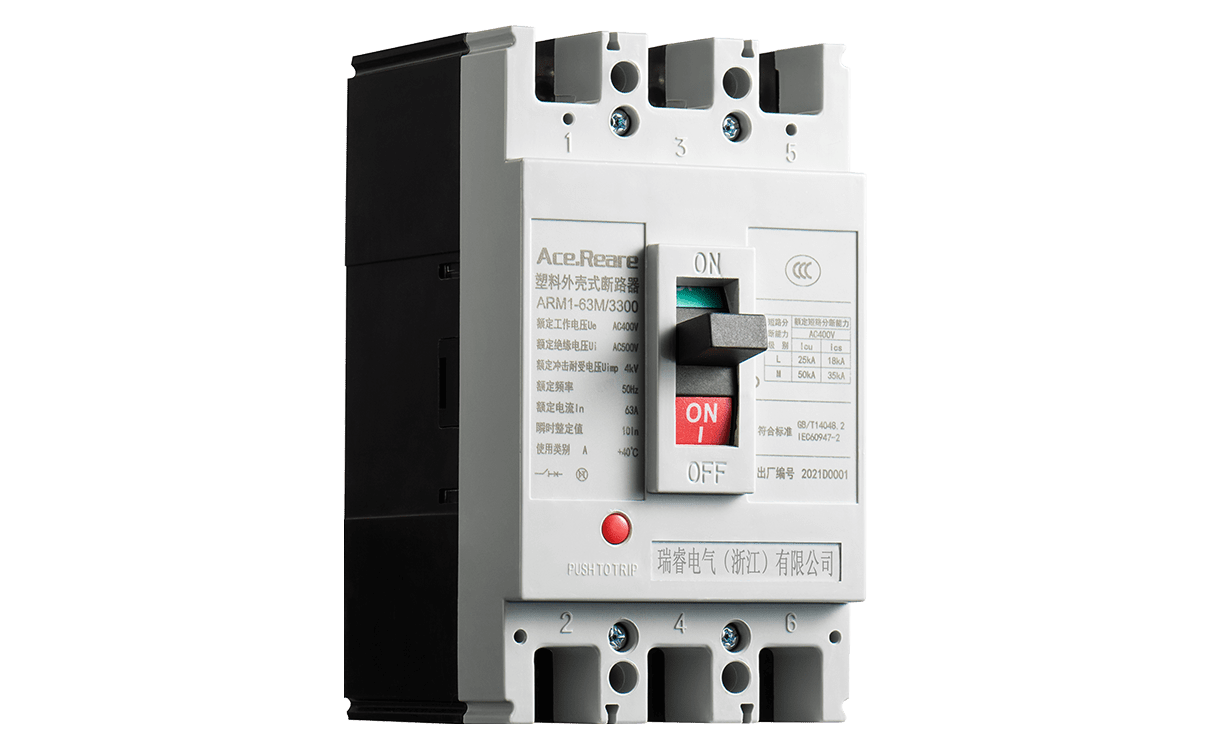
Date | 2022-10-14 14:08:26
Today's main introduction to plastic case circuit breaker decoupler and operation of the circuit breaker false tripping related troubleshooting methods.
Plastic circuit breakers in the decoupler can be divided into instantaneous decoupler and overload decoupler, instantaneous and overload decoupler synthetic compound decoupler (without branch decoupler). Instantaneous and overload decouplers are located inside the moulded case circuit breaker and branch excitation is usually an accessory to the moulded case circuit breaker. Branch decouplers are electric circuit breaker decouplers that use external power to provide power decoupling for the branch and are mainly used to remotely disconnect this breaker.
The instantaneous release is a short circuit release, generally 5-10 times (C-type release) and 10-15 times (d-type release) the rated current trip, overload release is generally 1.13 times the rated current, 1 hour without tripping, 1.45 times the rated current, 1 hour trip for the breaker thermostat.

Distribution generally uses instantaneous disconnectors with 10-15 times the rated current (type D disconnect) and general distribution uses circuit breakers with 5-10 times the rated current (type C disconnect); branch disconnectors depend primarily on whether remote operation is required. In addition, branch release devices can only be remotely cut off and require an electrically operated mechanism when the circuit breaker needs to be remotely connected.
The analysis, judgement and treatment of false tripping faults in circuit breakers in operation are described below.
If the system does not have a short circuit or direct grounding phenomenon, the relay protection does not work, the circuit breaker automatically trips, the circuit breaker is called "false action". The analysis, judgment and processing of "false jump" is generally divided into the following three steps.
1, according to the following characteristics of the accident phenomenon, can be determined as "false tripping".
(The meter and signal are normal before tripping, indicating that there is no short-circuit fault in the system.
) After the trip, the green light flashes continuously, and when the red light goes out, the circuit breaker current meter and the active and reactive power meter show zero.
2, identify the causes, respectively, to deal with.
1 personnel careless touch, operation, mechanical external vibration, external force under the action of the protection plate vibration caused by automatic decoupling "false action", please exclude the cause of the switch fault, immediately send power.
2 For other electrical or mechanical part failures, if power transmission cannot be restored immediately, contact the dispatcher and relevant leaders to disable the "false-acting" circuit breaker and transfer it to overhaul processing.
3 Check and analyse the electrical and mechanical aspects of the circuit breaker separately.
1 electrical fault causes a protection error, the rectification position is not correct, or current, transformer circuit failure; secondary circuit insulation is poor, DC system two points of grounding (tripping circuit of two points of grounding).
2 cause of machine side failure, one is the closure maintenance bracket and gate closure can not be maintained, tripping; two is the hydraulic machinerya gate primary valve and check valve occurs when the seal is poor, leakage, should be from the closure to maintain the hole to the upper end of the secondary valve oil supply, maintain the circuit breaker in the closed position, if the amount of leaking oil exceeds the amount of supplementary oil, the pressure of the upper and lower ends of the secondary valve is different. When the pressure in the upper part of the secondary learning is less than the pressure in the lower part, the secondary valve automatically resets, and when the secondary valve is reset, the high pressure oil in the oil cylinder input chamber is discharged and the plastic case circuit breaker trips.